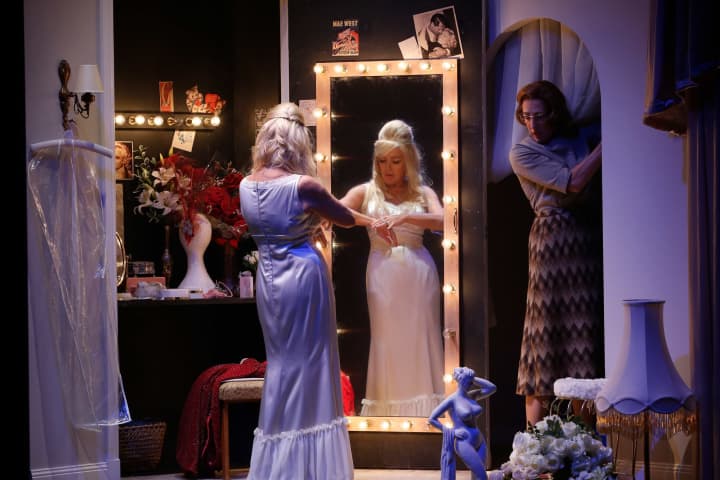Author and journalist Jenny Valentish reflects on the relationship between Diane Arbus and Mae West, and two vastly different views of the women's liberation movement.
The year was 1964. Women’s liberation had taken its cues from the civil rights movement, and now it was falling into step with the Vietnam War protests and the New Left. Writer and activist Betty Friedan had recently published the seminal The Feminine Mystique. Journalist Gloria Steinem was beginning her career with high-profile feminist articles. President John F. Kennedy's Presidential Commission on the Status of Women had released its report on gender inequality.
It was also the year that the platinum queen of bon mots, Mae West, met photographer Diana Arbus in Los Angeles. Arbus was known for her voyeuristic portraits of ‘freak show’ people and those living on society’s margins.
A year before, Norman Mailer had complained of Arbus’s portrait of him for Esquire, 'Giving a camera to Diane is like putting a live grenade in the hands of a child.' A few years later, writer Susan Sontag would dedicate an essay to what she viewed as Arbus’s exploitative style, and in 2005 Germaine Greer wrote for The Guardian about being straddled by Arbus: 'Pinned on the bed by her small body with the big camera in my face, I felt my claustrophobia kick in; my heart-rate accelerated and I began to wheeze. I understood that as soon as I exhibited any signs of distress, she would have her picture.'
We know, from the cover story Arbus wrote and shot for Show magazine, that the two women talked extensively before Arbus photographed West lounging in her opulent bed (above which a mirror was installed). In playwright Stephen Sewell’s imagining of this meeting between West and Arbus, West is immediately suspicious of the younger woman’s motives. Arbus is almost an apparition, a ghost of Christmas Present, come to dispense some painful home truths to a woman who is out of step with the times.
Sewell’s take on this conversation follows dialectical theory: the pair would have had vastly different takes on the women’s liberation movement, but they might have been intrigued enough to push forth to a greater understanding. A more imminent example might be the #Feminist debate in Melbourne this March, held between self-proclaimed ‘bad feminist’ Roxane Gay, who frequently critiques patriarchal society, and ‘factual feminist’ Christina Hoff Sommer, who argues that modern feminist thought often contains an 'irrational hostility to men'
In 1964, as with now, some criticism against feminism centered around its exclusivity. Friedan’s The Feminine Mystique was primarily interested in the oppression of white, middle-class women. Whether Arbus called herself a feminist or not is debatable (she dispassionately titled her picture of Greer ‘Feminist In Hotel Room’), but she was from a stiff, wealthy family and attended prep school. Compare that to the rough-and-ready roots of West, whose father was a prizefighter called Battlin’ Jack West, and who had made her debut in vaudeville by the age of 14.
If Arbus was closed up, West burst out at her seams. She was bawdy, combative and competitive – in a way, more macho than most men. And yet, while she didn’t trouble herself with an academic, feminist take on social issues, her politics were observable through her actions. She wrote a play, The Drag, to speak out against gay aversion therapy, and when her landlords protested that they didn’t allow 'negroes' on the premises, she bought the building.
When Arbus’s portraits of West were published in the January 1965 issue of Show, West tried to sue the magazine. Her lawyers called the layout 'unflattering, cruel, and not at all glamorous.' Whatever rapport the two women had struck during that one day in Los Angeles, the battle lines were soon redrawn.
Published on 27 February 2019






